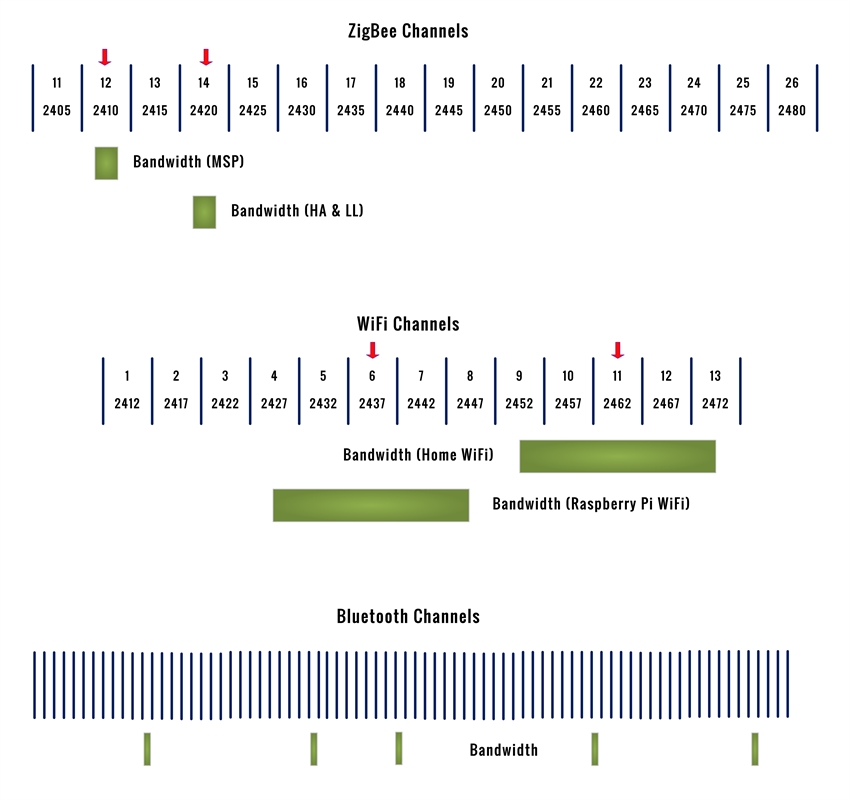The 2.4 GHz Band
The 2.4 GHz radio band is very congested, because it is shared by ZigBee, WiFi and Bluetooth. It is used by other applications, both inside and outside of the home, over which the user has no control. An awareness of the constraints that this congestion imposes is an essential part of the design of a home automation system. Fortunately, both the ZigBee and WiFi design standards make best use of the available frequencies, and enable several networks of each type to be accommodated within the 2.4 GHz band.
The 2.4 GHz Band
This diagram illustrates one possible configuration for making optimum use of the 2.4 GHz band in a home automation system.

The 2.4 GHz band actually spans a frequency range from 2.4 GHz to just under 2.5 GHz. To make the frequencies easier to read, they are shown in Megahertz (MHz).
There are three areas to this diagram:
The top area shows the ZigBee channels and the center frequency of each channel. Two ZigBee channels are used, one at channel 12, and the other at channel 14, as indicated by the red arrows. The green blocks signify the bandwidth of each of the networks, which is an indication of the frequencies over which the signals are transmitted.
The middle area shows the WiFi channels and the center frequency of each channel. Two WiFi channels are used, one at channel 6, and the other at channel 11, as indicated by the red arrows. The green blocks signify the bandwidth of each of the networks, which is an indication of the frequencies over which the signals are transmitted.
The bottom area shows the Bluetooth channels. The Bluetooth signals are not transmitted on a signal channel, but instead hop from one channel to another across all of the Bluetooth channels.
The diagram shows the correct relationship between the frequencies used by each of the three network types, across the 2.4 GHz band.